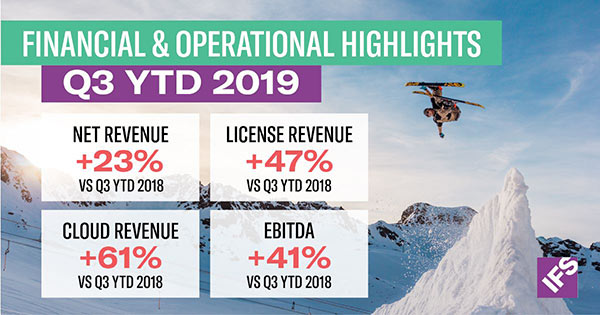Today we can say that we have much more eco-conscious than the past. Businesses should not ignore this awareness. The importance of sustainability in the supply chain is increasing day by day.

Today, the public is more eco-conscious than ever, and businesses have no choice but to align themselves with this shift. Whilst a sustainable operation alone is perhaps not enough to motivate a sale, it is likely to drive long-term loyalty among the growing ranks of eco-conscious individuals.
The supply chain is one area with plenty of room for improvement where sustainability is concerned. The complexity of today’s supply chains, poor optimisation of logistical processes, and the rush to get products to market, all mean that excess waste is commonplace.
So, how can the right technological solution bolster sustainability and reduce the carbon footprint of the supply chain?
Identifying the cause
Identifying the sources of waste in the supply chain is a crucial first step for any business looking to transition to a more eco-friendly model. So, what are the most common causes of waste?
The over-production or over-purchasing of materials—usually a result of forecasting errors—is one of the most common causes of supply chain wastage. It’s estimated that between 5 per cent and 7.5 per cent of total annual waste stems from this factor alone, according to WRAP.
The negative effects of inventory mismanagement and the unnecessary transport of goods is also well-documented. Any logistics activity that results in the needless transport of inventory increases the carbon footprint of the supply chain without cause or reason. By minimising the number of miles a product travels in its lifetime—from manufacturing, through packaging, storage, and distribution—businesses can make considerable emissions savings.
Poor coordination and communication between suppliers and partners, resulting in incorrect or poorly optimised shipments, also takes its toll on the sustainability of any supply chain. Sometimes, these failures are a result of simple human error, which is difficult to mitigate against. However, the issue can arise as a result of the lack of availability of data, poor data orchestration, or difficulty analysing the wealth of data produced by an ever more connected supply chain.
Striving towards agility
Any business looking to address these pervasive issues should look to cultivate an “agile supply chain”. As part of this process, best-in-class business management technologies should be employed to eliminate all activities that do not add tangible value. This will result in both a reduction in carbon emissions, and an increase in profit margins as a result of costs saved.
The agile supply chain refers to a commitment to responsiveness, flexibility and quickness in the day to day operation of the supply chain. Agile supply chains harness real-time data to improve efficiency and eliminate excessively stocked inventory, and are able to adapt to rapidly changing economic environments.
According to analyst house McKinsey, agile businesses also offer higher levels of service, despite their smaller inventories. The report found that 94 per cent of deliveries from agile businesses arrived on time, compared to 87 per cent achieved by competitors, and inventory was held on average for 85 days by agile businesses, as opposed to 108 day by competitors.
This is all well and good, but how can businesses apply best-in-class technological solutions to achieve agility, save costs, and bolster the sustainability of their supply chains?
Improving coordination and visibility
Business management systems such as Enterprise Resource Planning (ERP), that better coordinate supply with demand and track loss and waste, represent a simple way businesses can work towards becoming more sustainable and efficient. Systems such as these go a long way to combatting the most serious causes of wastage in the supply chain.
Modern solutions bridge the communication gap between the shop floor, back end, and planning and control systems, forming an arterial route through which information can travel instantaneously between the links of the supply chain. They also provide real-time updates and analytics, which boosts transparency throughout the entire supply chain, ensuring orders are met on time and within budget.
Further, increased automation in manufacturing processes has made reshoring production, packaging and other operations to bring manufacturing closer to customers more economically viable for companies. This will result in the elimination of emissions associated with international shipping via air or sea. The cross-functional data provided by best-in-class ERP systems enables these companies to make fundamental improvements to their supply chain model, whilst drastically cutting emission levels.
The business and environmental benefits of technologies such as ERP are clear. In order to champion sustainability and cut emissions, businesses must move beyond defunct legacy technology and make a commitment to digital transformation.
With the right strategic approach to digital transformation, concerns surrounding potential downtime, maintaining business continuity when working on the go, and transitioning away from on-premise data servers call be alleviated. What should concern businesses is the fear of the negative impact wasteful supply chain processes are having on the environment.
Success will involve identifying opportunities to streamline processes, improve collaboration and ultimately drive greater efficiency. Employing best-in-class technology to do just that can drive sustainability and drive profit margins in equal measure.







